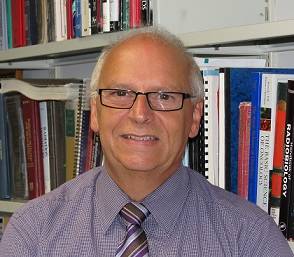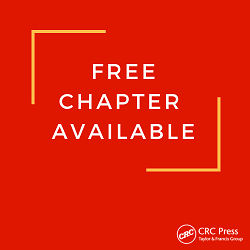We were lucky enough to catch up with highly regarded Dr Jerry Battista, who gave us an insight into his career and thoughts behind his book Introduction to Megavoltage X-Ray Dose Computation Algorithms.
What first attracted you to radiation therapy as an area of study?
I was an undergraduate Physics student and leaning towards practical applications. In my search for a graduate program, I travelled to the University of Western Ontario (London, Canada) that offered a master’s program in radiation physics using clinical radiotherapy equipment at the local cancer “clinic”. My supervisor (Dr. J.C.F. MacDonald) was a leader in the early clinical adoption of “megavoltage” radiation from Cobalt-60. His kind words to a confused cancer patient in a hallway hooked me into a medical physics career with the potential for tangible contributions to medicine and humanity.
How did you decide to specialise in computational algorithms in treatment planning?
After completing a Ph.D. degree in Medical Biophysics at the University of Toronto on the topic of 3D imaging using Compton scattering, I stayed on as a postdoctoral resident in clinical physics at the Princess Margaret Hospital (now Cancer Centre) and worked closely with Dr. “Jack” Cunningham. He was then pioneering the computerization and commercialization of radiation treatment planning systems. CT scanners were very new then (mid 1970’s) and we worked on extracting tissue electron density information that could improve the accuracy of dose computation algorithms for megavoltage beams.
What have been the biggest developments in the medical physics field in the last 15 years?
Intensity-modulated radiation therapy has certainly helped millions of cancer patients through more precise treatment with reduced side effects. Three-dimensional (3D) medical imaging with ultrasound, CT, and MRI has evolved for treatment planning and for image guidance, with full integration onto radiation treatment machines (e.g. tomotherapy). Further advances in functional and molecular imaging are certain to impact treatment plans and detect tumour-specific and normal tissue effects during therapy.
Computers have progressed exponentially: dose optimization has flourished along with automated dynamic control of beam-shaping elements. The current trend is towards four-dimensional (4D) dose deposition and verification, accounting for physiological or anatomical changes in the patient, using dynamic imaging and live target tracking. Further gains in sculpted dose deposition may be achieved with particle beams (e.g. Carbon ions) if these can be provided in compact accelerators at a reasonable cost. At present, this is limited to proton beams, with some advantage in niche tumour sites over megavoltage x-ray IMRT.
How have your books addressed these developments?
Progress along algorithmic dose lines are addressed in detail in Chapters 4 through 6, following a grand historical overview in Chapter 3. Futuristic topics are discussed in Chapter 7, including 4D treatment planning and advanced imaging techniques for achieving BART – Biologically Adaptive Radiation Therapy. We have not addressed particle beams as this would have required another 400 pages of material!
What will the field of medical physics look like in 50 years?
This will depend mainly on advances made in cancer biology rather than in radiological physics. The promise of a single magic bullet to eradicate cancer remains elusive (perhaps even illusive) and unlikely to be fulfilled in decades. Cancer is multi-dimensional in nature with each type of cancer having a different aggression profile and pathway for expressing metastatic potential.
If I had to guess, molecularly-tagged imaging agents will be perfected and used to locate primary, metastatic, and dormant cancer cells with very high specificity for each cancer type. With this image guidance, nanotechnology-derived drugs or devices (perhaps nanobots) will then deliver cytotoxic payloads that might still involve radioisotopes or radiation-activated drugs using external radiation.
How did your time at Princess Margaret Hospital shape your career?
This facility had (and has) great research-minded staff in physics, biology and medical domains. This synergistic environment encouraged wide thinking and innovation. For example, CT scan detectors and CT-based radiation treatment planning were investigated before their initial commercial release. I was fortunate to be in a Medical Physics group led by Drs. Harold Johns and J.R. Cunningham - the founding fathers of medical physics in Canada and beyond.
Who has influenced you the most in your career?
It’s a difficult question because it is time dependent. My initial choice of career path was certainly influenced by Dr. J.C.F. MacDonald. My Ph.D. project on medical imaging (1973-77) arose from Dr. Michael Bronskill’s foresight before the advent of CT scanners. My postdoctoral life was then shaped by Dr. J.R. Cunningham. My interest in research, publishing and book writing was influenced by my colleague Jake Van Dyk.
What has been a career highlight for you?
While research and development with colleagues in medical physics and radiation oncology has dominated my career activities, I drew most of my satisfaction from interactive teaching. I have lectured a full range of students at different levels and won our university’s top award for inspiring them. When I meet students later in life, they remember and cite some key points from my lectures and thank me (see book’s Foreword section)!
What advice would you give to an aspiring researcher in your field?
There is no question that future progress in cancer diagnosis and treatment must span across traditional borders in science and technology. Physics and biology are normally taught in different programs but in nature they are fully integrated; isolated independent studies of each will limit progress in medicine. My advice is that students should develop a wider range of interdisciplinary interests, applying physics thinking and computer modelling to important problems in biology, i.e. biophysics.
What is the last book you read for non-academic enjoyment?
I have a hobby interest in space exploration and became an associate member of the Centre for Planetary Science and Exploration at the University of Western Ontario. I have published a book chapter recently (2016) on the significant radiation hazards of a mission to Mars. I can only hope that my high dose estimates are incorrect when astronauts venture out to this planet!
I am currently reading the illustrated book version of “A Brief History of Time”” by Stephen Hawking. This presents fascinating cosmology topics on the Big Bang and black holes. It is forcing me to step out of my comfort zone and review some modern astronomy concepts and debates!

Introduction to Megavoltage X-Ray Dose Computation Algorithms, 1st Edition
Author(s): Jerry Battista
Price: $280.00
Cat. #: K33273
ISBN: 9781138056848
Publication Date: January 02, 2019
Binding: Hardback

.png)


